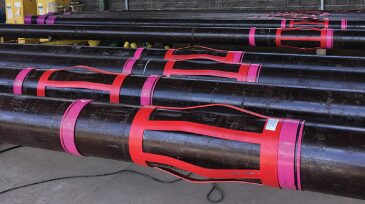tracers
-
SponsoredDeveloping a reservoir with current capex constraints requires innovative technology to provide reliable reservoir production insight. This article describes how chemical tracer technologies can be integrated into reservoir development plans to reduce risk, minimize capex, and maximize ROI.
-
Nanotechnology has great potential to reduce cost, increase production, and even improve the sustainability of E&P operations. But, where do we stand in terms of potential vs. reality? And, is the industry ready and willing to use the technology?
-
When it came to decide where to collect a critical sample of fractured rock, a new method for turning microseismic data into a heat map designed to display the most intense fracturing activity was considered.
-
This paper discusses a crestal gas-injection project that was carried out in a supergiant heterogeneous-carbonate oil field.
-
A new attachment system overcomes the limitations of traditional methods for securing tools and accessories to drilling and completion strings.
-
Partitioning interwell tracer tests (PITTs) have been used to estimate remaining oil saturations (ROSs) during waterflooding.
-
This paper reviews the design and implementation of a full-field interwell tracer program for a giant onshore oil field in Abu Dhabi.
-
The surge in unconventional completions has created a substantial accumulation of previously hydraulically fractured wells that are candidates for hydraulic refracturing.
-
Rising demand for flowback technologies to reduce uncertainties is leading to the creation of more hydrocarbon and water tracers. These chemical-based tracers may play an important role in the shale industry’s effort to come up with more cost-effective fracture designs.
-
Not only are individual wells challenging, but most are part of a complex reservoir network that must be managed over an extended period.
Page 2 of 2










